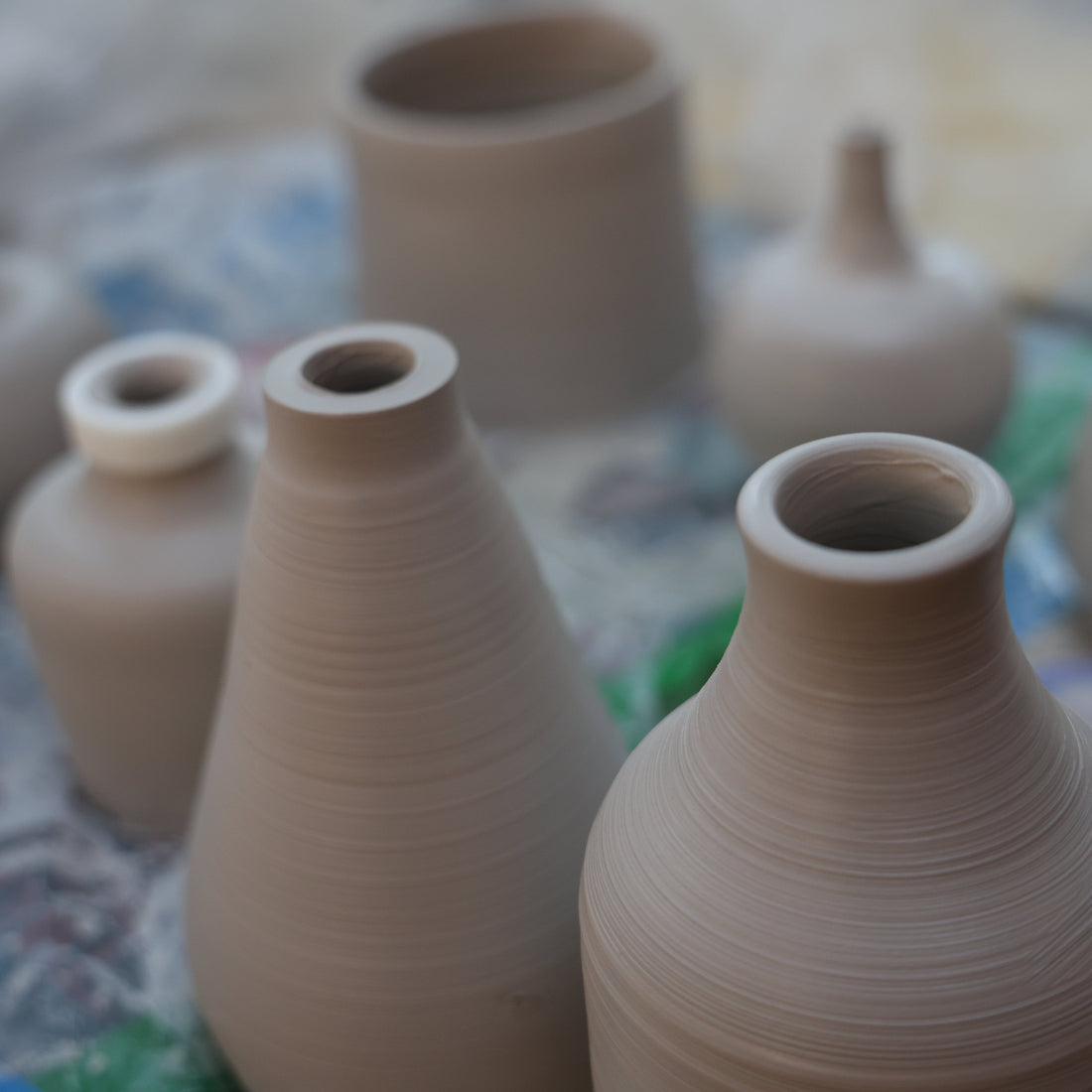
Different kind of firing types and their effect on the piece
Share
Exploring Firing Techniques in Ceramics: From Tradition to Modern Art
When most people think of ceramics, they picture the shaping of clay on a wheel. But in truth, what makes pottery durable and beautiful happens later—during the firing process. At our pottery studio in Austin, we love introducing students to the different ways clay can be transformed into lasting works of art. Whether you’ve joined us for one of our pottery classes or are just curious about the craft, learning about firing techniques gives you a deeper appreciation for this ancient practice.
The Magic of the Kiln
At the heart of every ceramics journey is the kiln. Firing turns soft, fragile clay into strong, functional pottery. Different firing techniques create unique finishes, textures, and colors, giving each piece its own character. In our Austin ceramics classes, we explain these processes so students can understand not just how to shape clay, but also how heat completes the story.
Common Firing Techniques in Ceramics
1. Electric Kiln Firing
Most modern pottery studios use electric kilns for their consistency and control. This is the method we use most often in our classes. It produces reliable results and allows students to focus on glazing and surface design without worrying about unpredictable outcomes.
2. Gas Firing
Gas kilns introduce reduction and oxidation atmospheres, which can dramatically change the surface of a piece. The results often feel more earthy and rustic, with colors that vary depending on how flames interact with the clay body. Many potters consider this process closer to traditional methods of ceramic firing.
3. Raku Firing
Raku is a fast, dramatic technique with roots in Japanese tradition. The pottery is pulled from the kiln while red-hot and placed in combustible materials like straw or sawdust. This rapid cooling creates metallic flashes and crackle glazes. It’s one of the most exciting types of firing we share during special workshops at our Austin pottery studio.
4. Wood Firing
Perhaps the oldest technique, wood firing is a long process that can last several days. Ash from the wood lands on the pots, melting into natural glazes. Each piece becomes completely unique, shaped not just by the artist’s hand but also by the flame itself. It’s ceramics in its most elemental form—clay, fire, and patience.
Why Firing Matters for Pottery Students
When you sign up for pottery classes in Austin, learning about firing gives you insight into how your work will look and feel once it leaves the kiln. It’s not just about technique—it’s about understanding how heat interacts with clay and glaze, turning your vessel into a finished piece of art. Students are often amazed when they pick up their fired work after class, seeing how the process transformed it into something completely new.
Ceramics as Art and Experience
For us, ceramics isn’t just about the finished mug or bowl. It’s about the experience of creating, experimenting, and being present in the moment. That’s why so many people come to our pottery studio in Austin not only to make art, but also to share the process with friends or loved ones.
In fact, one of our most popular offerings is a pottery date night. Couples get to spin clay on the wheel, learn about the firing process, and leave with memories (and sometimes clay on their clothes). It’s playful, creative, and unlike anything else in Austin’s date night scene.
Experience Ceramics in Austin for Yourself
Whether you’re fascinated by Raku, curious about wood firing, or simply want to try your hand at throwing clay for the first time, our pottery classes in Austin are the perfect place to begin. At 3 Cups, we combine technical instruction with community, so you leave with both pottery and a deeper appreciation for the art form.
